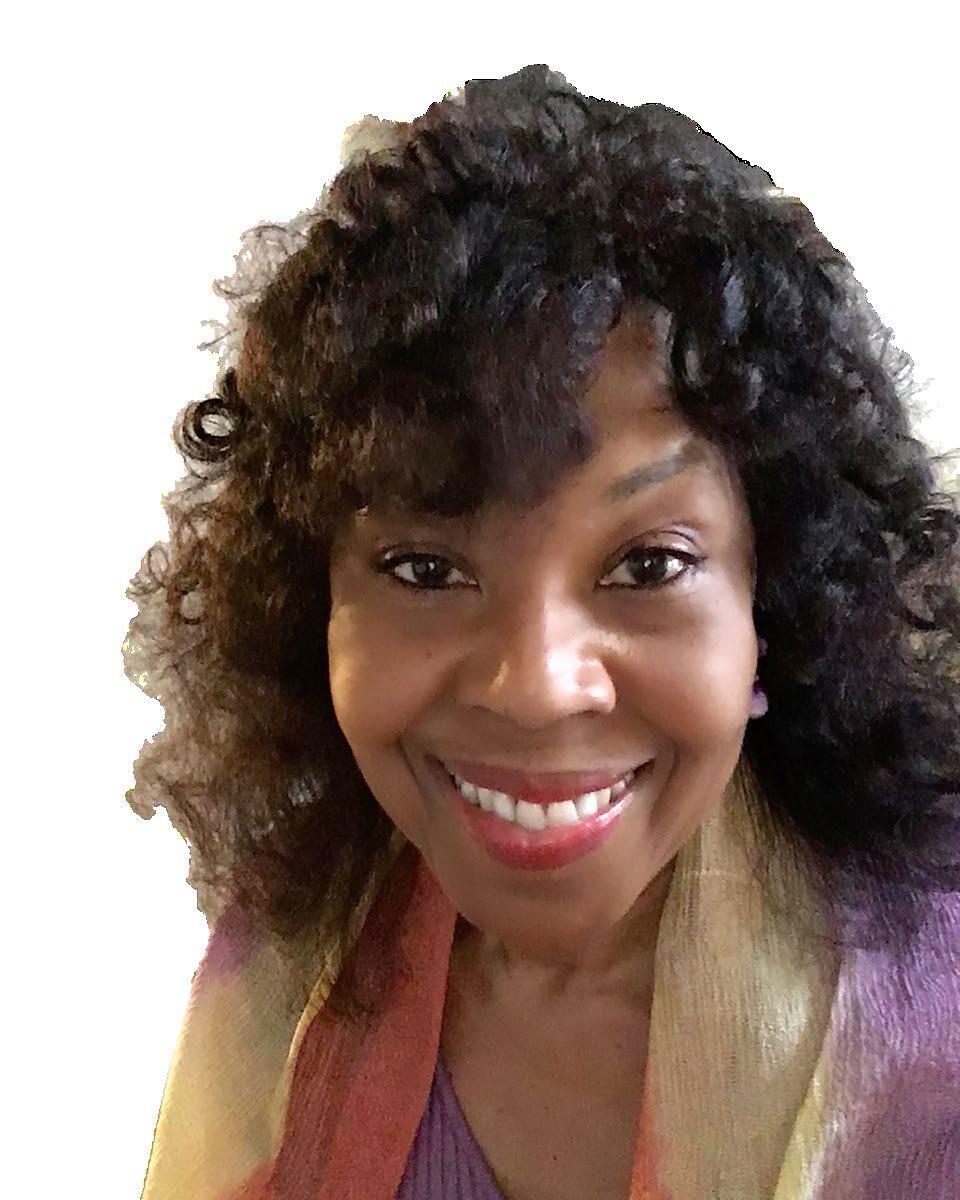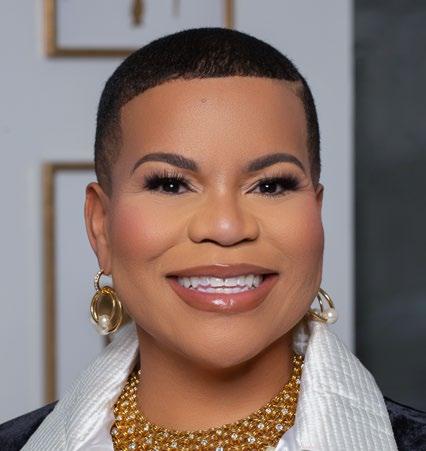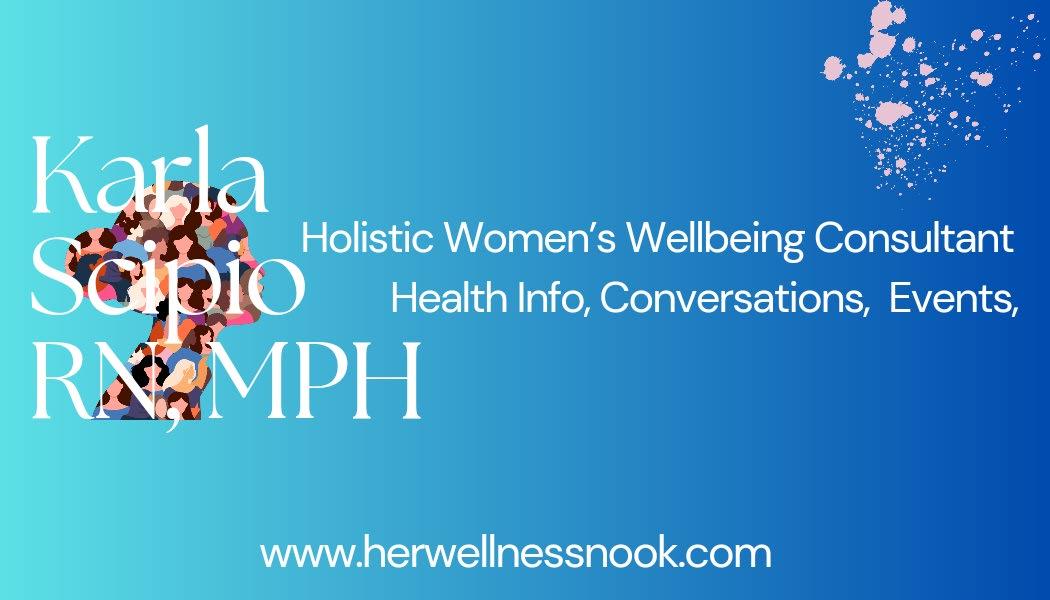








Family is a foundational institution through which generations proceed. One of the most dominant spheres of influence on all people is the family. The first constant impressions made on newborn babies are instilled by their families, whether functional or dysfunctional, biological or adoptive. Parents, absent or present, came together to create a new life as the next generation. Reproduction or multiplication activates a seed principle God established in creation that continues to populate the world.
Ancient to modern, generation after generation lives and dies, making room for the next ones to come. Major dilemmas of these latter times are wicked schemes, lawlessness, and greed. These sins dismantle the morals pertaining to family values, religion, education, government, economics, media, and entertainment. Therefore, lies and deception increase while truth is revealed to those who diligently seek it.
As modern gadgets and new technologies occupy our lives, time, and space, establishing and maintaining family relationships requires intentional efforts. Connecting personally outside of texting and social media can become foreign, causing distance to increase, which can affect children even more. Most of us grapple with the procrastination of not calling beloved relatives and friends like we once did while busyness consumes a lot of what could be quality time. Clearing the calendar to schedule face-to-face interaction may seem like a juggling act, considering work, responsibilities, and commitments. But pressing in to reconnect with people we care about must become a priority.
Recently, my spiritual daughter, Grace and I carved out time when she and her four children, ages 12 to 4, would
visit me. But it did not just happen. It took persistence. Being a wife, mother and running a successful but demanding business made scheduling difficult for Grace. It was somewhat of a challenge for me, too; ministry, overseeing PURPOSE, book coaching, writing a new book, and managing my personal life. Following a couple of cancellations due to other unexpected obligations, together we determined to just do it anyway. What a refreshing and enjoyable visit with lots of hugs, conversations, and laughter between three generations. We really missed each other.
In this issue, you can learn about the seven generations living today and ways to bridge gaps between various age groups. The sacrifice of ancestors, wisdom of elders, collaboration with peers, and engaging in fun educational activities with children, develop diverse insight for appreciating heritage and living legacy. Their distinct callings, gifts, skills, and abilities are identified, which enable them to make their mark in this world. Also, read on how to overcome giants in your life, effectively manage stress, and control social media’s impact on your kids, and much more.
With Purpose,
Ella Coleman
“Beloved, let us love one another, for love is of God”…
1 John 4:7 NKJV





Editor’s Commentary
Mentoring by Alleceia Walker
Contributor’s Page Next Generation NOW Gearing Up in the Spirit to Win by Justin Seaton
Healing Power of Purpose by Dr. Dee Hester
Generational Understanding by Ella Coleman
The impact of Social Media on Children by Dwayne Bryant
Overcoming Life’s Giants: A Journey of Resilience and Growth by Dr. Daniel Haupt
Building Generations: The Power of Safe Spaces for Black Women by Karla Scipio
Courage for the Challenge by Rev. Joyce E. Jones Healthy Choices: Understanding, Managing and Releasing Stress
Guest Family Models (Eldest to Youngest) Carolyn Spears, Stacy Spears, Jordin McQueen & Imani Aliyah McGuueen
Alleceia Walker, Managing Editor


“Likewise, teach the older women to be reverent in the way they live, not to be slanderers or addicted to much wine, but to teach what is good. Then they can urge the younger women to love their husbands and children.”
Titus 2:3-4 (NIV)
I intentionally began a life of service as a student at Howard University in the early 1990’s. During my study of the Art and Science of Education, I knew early it was answering “A Call to Serve” bigger than myself. Educational Pioneer, Marian Wright Edelman said, “Service is the rent we pay for being.” Variations of her quote have been linked to other pioneers, also. Congresswoman Shirley Chisholm, the first black woman elected to the United States Congress, said “Service is the rent we pay for the privilege of living on earth.” Muhammad Ali, legendary heavyweight boxing champion and activist, said “Service is the rent you pay for your room here on earth.” Whichever quote and whomever you prefer to credit is fine, so long as it is being lived. It is all derived from the original Servant Leader, Jesus, and I have yet to meet someone who has out served Him.
My “Call to Serve” continues to show up in the Titus 2 mentoring programs I design for various communities. I received my first mentor at five years old and the impact my teenage neighbor, Carolyn Lee, has had on my life is

priceless. Carolyn later became a Social Worker, impacting many families over the years. I would often “shout her out” on social media, reminding her of the first seed sown and expressing my gratitude. Over the course of my life and to this day, I have been mentored by some remarkable men and women. But the favorite group from whom I have gleaned so much wisdom, surprisingly has been my mentees.
It is something special when the student respectfully becomes the teacher, and the former teacher can yield graciously. This is truly the gift that keeps on giving. Recently, I attended a Celebration of Life of an Elder. I used to marvel and say, “what a life well lived” during Homegoing Services, but his Celebration shifted that. My takeaway from his journey is to “live a life well served.” He poured out all he had everywhere he went. I am inspired to take a page out of Pastor Rudy’s book and continue to “Live to Serve.” I once was asked, “why do you serve so much?” My reply was simple, “my desire is to leave here on EMPTY not exhausted or burned out but truly having exhausted all possibilities of great ideas to inspire, encourage, and uplift others, no matter what.
While enjoying this issue, I hope we are all inspired to look ahead and behind to exercise giving in both directions and maintain a balance rooted in service.


Publisher & Executive Editor
Ella Coleman
Managing Editor
Alleceia Walker
Graphics Designer
André Hawkins
Contributing Writers
Dr. Daniel Haupt
Joyce E. Jones
Dwayne Bryant
Marki Lemon-Ryhal
Karla Scipio, RN
Dr. Dee Hester
Next Generation
Now Contributors
Justin Seaton
Morgan Holden
Monique Lavoie
Hannah Grace Pritchett
Aubriana Hills
PURPOSE Magazine is published quarterly and is a Trademark. Copyright © 2024, Ellavation Publishing, 2868 Stelzer Road, # 156, Columbus, OH 43219. All rights reserved. No portion of this publication may be reproduced, distributed, or transmitted in any form or by any means in whole or in part without prior written permission of the publisher.
“Next Generation NOW” is a dedicated section of PURPOSE Magazine that highlights our Next Generation Voices. It is our desire to platform these high school and college scholars NOW, so they can make an impact and positive change within our Global Community that will last a lifetime.

Morgan Holden
James Huber Blake High School Class of “24
Contributor

Hannah Grace Prichett
James Huber Blake High School Class of “24
Contributor

Monique Lavoie
Howard University Class of ‘27
Old Lyme, Connecticut Junior Editor

Aubriana Hills
Howard University Student
Contributor

By Justin Seaton



Gleaning in the Spirit enables you to gear up in godliness, effectively ascending with revelation and understanding of God’s purpose for your life. People, especially teenagers, may find this concept confusing because many of us are trying to find our purpose in life. Even my elders, the ones with every answer I can think of, wonder the same thing. Eventually, elders and youth alike, realize that God has a plan and a revelation for us.
Gearing up in the Spirit requires intentional discipline. So, pray for God ‘s help and simply begin. The way I gear up in the Spirit of God is by reading the Bible and a devotional every day to get closer to Him. In addition to reading and studying The Word, I pray because that is how I personally connect to God. I’ve come to realize, the reason so many teenagers have little to no faith is because of idols and their surroundings. Some idols may be the people they are around, the environment, social media, video games, and the list goes on.
Teenagers, now more than ever, need to learn how to “Armor Up”. Whether the attack is physical, mental, or emotional, armoring up is the first line of defense and offense. We are all battling something, and we cannot go to battle without armoring up as it is written in Finally, be strong in the Lord and in his mighty power. Put on the full armor of God, so that you can take your stand against the devil’s schemes. For our struggle is not against flesh and blood, but against the rulers, against
the authorities, against the powers of this dark world and against the spiritual forces of evil in the heavenly realms. Therefore, put on the full armor of God, so that when the day of evil comes, you may be able to stand your ground, and after you have done everything, to stand. Stand firm then, with the belt of truth buckled around your waist, with the breastplate of righteousness in place, and with your feet fitted with the readiness that comes from the gospel of peace. In addition to all this, take up the shield of faith, with which you can extinguish all the flaming arrows of the evil one. Take the helmet of salvation and the sword of the Spirit, which is the word of God. And pray in the Spirit on all occasions with all kinds of prayers and requests. With this in mind, be alert and always keep on praying for all the Lord’s people.



In those verses it talks about praying for all the Lord’s people. This is important because living in this world, prayer is the most powerful gift the Lord has given us. Additionally, the verses speak about the different types of armor we as Believers have been given, such as the belt of truth, breastplate of righteousness, our feet fitted with the readiness that comes with gospel of peace, and the shield of faith. However, having a shield is useless without the gift of faith. It is essential to have faith behind that shield. It is time for us to “Gear Up” to unlock the blessings ahead of us in 2024!
Justin Seaton attends Dwight D. Eisenhower Middle School in the Maryland/DC area and has been a member of Hope Christian Church in Beltsville, MD, all his life. In his free time, Justin enjoys quality time with family and friends. Also, he enjoys playing sports, games and giving back to the local community through various outreach activities such as feeding the homeless.
By Dr. Dee Hester
Knowing your purpose provides a strong foundation for healing the soul amidst trials, positioning you to live a life of faith and power. When you are clear on your purpose— whether it be to spread love, serve others, or fulfill a specific calling—you are better equipped to be secure and strong in the Lord. A sense of purpose gives you a reason to keep pushing forward, even when circumstances seem hopeless to the natural eye. It allows you to find meaning in the middle of suffering and persevere with confidence through the darkest of times.
Knowing your purpose enables you to find peace in the truth that God is using even the most painful experiences for your good. Romans 8:28 reminds us that God works all things for the good of those who love Him and are called according to His purpose. This promise offers hope and reassurance that there is a greater plan at work, even when we can’t see it in the moment. The power of your faith and belief in your purpose will strengthen your spirit while leading you to receive the manifestation of an abundance of blessings beyond your imagination.

Take some time to meditate on the word of God and find biblical figures like Job, who faced unimaginable loss and suffering, yet triumphed over every tragic hardship. He is a testament to the power of knowing one’s purpose in the face of adversity. Despite his trials, Job remained faithful to God and trusted in His plan, ultimately finding healing and restoration in the end. Like Job, when rooted in our purpose and trust in the sovereignty of God, we can find peace and healing in the midst of our own struggles.
As believers, understanding purpose also helps you to see the bigger picture beyond current circumstances. It allows you to shift your perspective from the immediate pain and suffering to the eternal hope and promise that lies ahead. When you know your purpose, you can see that your trials are not without meaning or purpose—they are part of a larger story that is guiding you towards growth, transformation, and ultimately, healing.
Always remember, knowing your purpose provides a firm foundation for healing the soul when faced with unthinkable challenges. It gives you a reason to keep moving forward; a sense of meaning in the midst of suffering, and an assurance that God is working all things for your good (Romans 8:28). By understanding your purpose, identifying your triggers, and anchoring yourself in the promises of God, you can navigate through the storms of life with resilience, faith, and hope.
Because of the Holy Spirit living within you, there is an unlimited supply of healing power inside. Through it all, remember your purpose is not just a destination— it is a guiding light that will lead you towards healing, restoration, and transformation. As you navigate through the trials, triggers and triumphs of life, don’t ever forget that there is so much more in you!
Dr. Dee Hester is certified Life Coach and Christian Counselor at Newburgh Theological Seminary. She is a Mentor, Educator and Author, and the founder/director of Kingdom Business Bible College and More in You Coaching.
By Marki Lemons
Meta-description: If you’re new to real estate, it can be overwhelming to know where to start. This article provides an innovative approach to understanding the basics of real estate in a conversational, informative tone.
Real estate is a broad term that encompasses various aspects of buying, selling, and investing in real property. As a first-time homebuyer or new investor, navigating the complex real estate world can be intimidating. However, understanding the basics is crucial for success in the industry. The information below offers an innovative approach for comprehending real estate 101. We will cover the essential aspects of real estate and provide practical tips and tricks to get you started.
Real estate can be divided into four categories: residential, commercial, industrial, and land. Residential real estate includes single-family homes, apartments, and condos. Commercial real estate has five or more units and properties used for business purposes, such as office buildings, shopping centers, and hotels. Industrial real estate includes warehouses and manufacturing facilities, while land includes undeveloped property. Each real estate type has its unique set of characteristics and considerations.
Various factors, such as location, market, and property conditions, influence a property’s value. Location is perhaps the most critical factor, as it determines the desirability and potential uses of the property. Market
conditions also play a significant role in real estate value. For example, demand exceeds supply in a seller’s market, increasing prices. Conversely, supply exceeds demand in a buyer’s market, resulting in lower prices. Finally, property condition is essential because it affects the overall appeal and value of the property.


Financing is integral to real estate investing, and various options are available. The most common type of financing is a mortgage, the loan used to purchase a property. Mortgages can be either fixed-rate or adjustable-rate, with each option having advantages and disadvantages. Other financing options include private loans, hard money loans, and seller financing.
Real estate investment can be a lucrative endeavor, but it requires careful planning and execution. The most common real estate investment strategies include flipping, rental properties, and REITs (real estate investment trusts). Flipping involves purchasing and renovating a property for resale, while rental properties include purchasing a property and renting it out for income. Finally, REITs own and manage income-generating properties.
Real estate can be complex and daunting, but understanding the basics is crucial for success. By knowing the different types of real estate, factors that influence value, financing options, and investment strategies, you’ll be well on your way to becoming a successful real estate investor. Conduct thorough research and seek professional advice before purchasing or selling real estate.

Marki Lemons Ryhal, MBA, ABR, AHWD, C2EX, CDEI, CIPS, CRB, C-RETS, CRS, & SRS
Keynote Speaker and Real Estate Entrepreneur; learn to earn up to a 2,682% ROI through AI/ChatGPT, Automation, and Repurposing Content. https://www.markilemons.com/
By Ella Coleman

Each generation has unique qualities, strengths, values, and insights to perform specific assignments during their lifetime in preparation for next generations. A generation is all the people born during a specific period who are regarded collectively. God made us to be fruitful and to multiply generationally. Great-great grandparents can live to see multiple age groups of their descendants. Yet, there are distinct differences that can help or hinder communication and understanding among generations.
Difference of opinions and outlooks between one generation to another—a generation gap—is quite common. There are chasms that separate the beliefs and behaviors of various generations. Change happens quickly, and it can be hard for parents and other older people to make sense of some things young people do. Likewise, the young may see parents, grandparents, and other elders as old fashioned and unwilling to embrace their new trends, lifestyles, and ways. To address and bring solutions that fill the “gap,” understanding all the generations alive today is necessary.
Currently, seven generations are alive on earth. From the eldest to newborns, there is so much to learn.


THE GREATEST GENERATION, (1901-1924), ages 123 to 97, the oldest alive now 117. The number of these resilient centenarians has quadrupled from 151,000 in the year 2000 to 573,000 today, according to Wikipedia’s report from the United Nations. Parents of the Traditionalists and Baby Boomers, Greatest Gen highly value marriage, relationships, and showed responsibility early in life with an extra strong work ethic. They pushed through the extreme racist Jim Crow era, lynchings, the great depression, and World War II, making tremendous sacrifices and strides. They tend to be young-at-heart, eager to enjoy the company of babies, children, teens, and adults, who should glean from their wisdom, experience, and historical memories. They prefer in-person interaction. Don’t text.


THE TRADITIONALISTS OR SILENT
GENERATION, (1925-1945) are ages 99 to 79. According to census data, in 2020 about 23 million Traditionalists were still alive. They helped to shape the 20th century pop culture by introducing rock, jazz (started by Black musicians in New Orleans in 1917), singers and musicians, television legends, gangs, journalists, iconic filmmakers, and others. They have a strong work ethic and a desire for stability because they grew up experiencing economic hardships. They uphold traditional values and culture. The best way for younger generations to develop good relations with them is to show respect. But Traditionalists must be willing to be flexible to better understand children, grandchildren, and younger people.

BABY BOOMERS, (1946-1964), ages 78 to 60, are parents of Millennials and Gen Xers. Because of an increase in the birth rate after WWII, when soldiers returned home to start families, Boomers became the largest generation of the 20th century. Baby Boomers are progressive, career and goal-oriented, eager for change and development, focused on personal fulfillment, and will fight for civil rights and equality. They used typewriters, word processors, 8-track tapes, cassettes, CDs, beepers, home, and the first modern computers. Although they didn’t grow up with email, the internet, cell phones, and digital communications, they were the first adults to transition into modern technology. Strong but flexible, they text but sometimes desire voice conversations.

GENERATION X OR XERS (1965-1980), ages 64 to 44, are children of the Silent and early Boomer generations and the parents and guardians of Millennials and Gen Zs. Boomers, who were lofty and career oriented, influenced Xers to spend more time on their own and to develop an older mindset. They benefited somewhat from the economic and educational equity attained through civil rights struggles and affirmative action. Xers contributed greatly to our leap into modern technology and serve as a bridge between older and younger generations. Primarily open-minded, they value diversity. They are independent, ambitious, resourceful, and eager to learn new skills.

MILLENNIALS OR GEN Y (1981-1996), ages 43 to 28, grew up in the Internet Age, being the first global generation, fully engaging in social media, electronic devices, and social activism. They craze learning new things and are better educated for modern careers than previous generations. They quickly move to new things when bored. Millennials are extremely gifted and sharpminded but can be prone to leaving tasks uncomplete and commitments unfulfilled. Gen Y feels entitled to the support, collaboration and understanding of others, but can be impatient and frustrated when situations don’t go their way. Communicating through social media and texting are preferred by them, which can leave parents and older generations wondering why they seem aloof and impersonal. The truth is, having grown up targeted by so many distractions, they carved out what seems to work best for them in communicating with others.


GENERATION Z OR ZOOMERS (1997-2012), ages 27 to 12, are children of Xers who focus on education and future development. The covid-19 epidemic greatly hindered their education, which caused an imbalance in their daily lives. Having to leave teachers, classmates, and friends at school for in-home computer-based learning took a toll on them and their parents. Consequently, many of them suffer mental and emotional challenges, but continue to show strength and determination. Those with less parental supervision may succumb to irrational behavior, engaging with peers in crime, sometimes becoming victims of violence. Values, fulfillment, and making a difference in their lives are important to them. As digital natives, they are competitive, money-driven and ambitious; politically and socially aware; radically and ethnically diverse. they better understand the effects of global warming, climate change, thus, likely to make eco-friendly choices. Alphas prefer texts and facetime; their interest must be fully held to maintain personal interaction with them.

GENERATION ALPHA (2013-2025), ages 11 to 0, are the first to be born fully in the 21st century. As children of Millennials, they are immersed in technology from birth. Automatically tech-savvy as toddlers and children, they effectively use cell phones, tablets, computers, and stream entertainment with little to no training. Spending too much time online, accepting AI as reality, and living in the moment, individuality, and diversity are traits
that describe them. Alphas are independent decisionmakers accustomed to navigating digital landscapes for knowledge and fun. They will need to develop creativity, critical thinking, communication, collaboration, and problem-solving skills to succeed in the future workforce. Environmentally aware,
Moving forward, let’s be conscious of how specific generations think and function. Intentionally focus on their positive traits while being creative to find ways for breaking barriers and mending misunderstanding. Consider the purpose for each generation and our inter-dependency in fulfilling it.
“For
the Lord is good; His mercy is everlasting, and His truth endures to all generations.”
Psalm 100:5 NKJV

Ella Coleman is the founder/publisher of PURPOSE Magazine, Purpose for Life Foundation, Ellavation Publishing LLC, and Purpose and Book Coach/ Consultant. Contact her at www.PurposeMagazine.com; purposeforlife@gmail.com. Follow her on: Facebook: https://facebook.com/EllaColeman73 https://facebook. com/PurposeMagazine; Instagram: https://instagram.com/elevatingwithella

By Dwayne Bryant
The Senate Judiciary Committee held a hearing with social media CEOs, including those from Meta, TikTok, X, Snap, and Discord, highlighting a critical problem: the safety of children on their platforms. Lawmakers expressed deep concerns over the negative impacts of social media on youth, emphasizing the urgency of addressing child exploitation and mental health issues.
Testimonies from affected children, parents, and guardians revealed disturbing instances of exploitation, underscoring the real-world consequences of inadequate platform safeguards. This pivotal moment reflected a broader societal challenge: balancing the benefits of social media with the imperative to shield children from harm, signaling a call to action for both lawmakers and tech companies.
I was excited to listen to the hearing because the Senate is finally understanding what I’ve been sharing with organizations across the country for the past ten + years: Social Media can be a tool, however, in the lives of too many of our youth, it is a weapon.
Throughout my presentations, I share several case studies, FBI and CDC data, relevant news coverage, and the latest information, such as sexploitation from NCMEC. I equip my audiences with an array of strategies, tools, and practical tips designed to safeguard their families, simultaneously, placing a strong emphasis on bolstering students’ self-esteem and mental well-being.
In an age of digital-age parenting, I’ve discovered there are three types of parents:
• The Not-My-Child - These parents believe their children would NEVER… they’ve had conversations about social media and their child would never…, these parents trust their children would never lie to them about social media. MmmmmKay!
• The I-Don’t-Know - These parents feel overwhelmed, and think social media is a way for their children to spend time with their friends, and as long as they are inside the house, they are safe.

• The Teach-Me-More - These parents understand the potential dangers of social media, including video games and YouTube. Therefore, they have filters and agreements in place, know passwords, and are protective of their children regarding social media (if they are allowed to use it), and monitor their activity as best as they can
For parents reading this article, I would like to leave you with a few slides I share with parents. Each slide highlights the importance of being proactive with your children’s social media. Sexual predators, internet trolls, cyber criminals, neighborhood thieves, and so many more deviants are looking for ways to gain access to your children and your home. You have to be the first line of defense and offense.


Dwayne Bryant is a nationally recognized speaker and recipient of the FBI’s Director of Community Leadership Award. He delves into the complex world of popular social media platforms and their potential negative impacts on youth. Dwayne provides both direct and online learning platforms. For more information, visit: DwayneBryant.com.
By Dr. Daniel Haupt

Life is filled with problems that can appear as giants blocking our path to success and fulfillment. Rather than mere obstacles, these giants are opportunities for growth and self-discovery. The journey to overcome them is ongoing—a process, not a singular event. Here, we outline a comprehensive, multi-step strategy that combines personal development, resilience, and proactive action to transform life’s crises into pivotal growth opportunities.
Step 1: Engage in Prayer
Prayer is a devotional dialogue that allows God to intervene in one’s affairs. It is an intimate process that extends beyond mere requests, involving a deep communion that aligns one’s thoughts with divine insights and guidance.
Step 2: Cultivate Faith
Faith is the bedrock for overcoming difficulties, involving a profound belief in one’s abilities and the attainability of one’s goals. It is a God-induced state of being, a result of engaging with God, leaving you with a substance and model of things hoped for.
Step 3: Harness Courage
Courage is essential when facing life’s giants. It means acting despite fear, stepping out of comfort zones, and confronting challenges head-on. Courage is not just a feeling but a prophetic (foreseeing) imperative that pushes back against fear—“false evidence appearing real.”
Step 4: Serve Others to Create Value
Service is a pathway to enhancing the well-being of others and developing personal skills. Building a supportive community through service can be crucial in overcoming personal problems and trials.
Step 5: Fight with Your Vision, Not Your Past
A forward-looking vision directs efforts toward future
aspirations, maintaining focus on what is achievable, rather than being hindered by past failures.
Step 6: Engage in Prophetic Self-Talk
Speaking about future successes as if they are already secured can boost confidence and solidify commitment to achieving set goals.
Step 7: Develop Resilience
Resilience is the capacity to recover quickly from difficulties, enhanced by adopting a balanced perspective on life’s challenges, practicing mindfulness, and seeking support from others.

Step 8: Set Habits, Not Just Goals
Consistent progress is achieved through habits that support long-term goals, fostering automatic behaviors that align with one’s objectives.
Step 9: Cultivate Self-Awareness of Your Strengths
Utilizing personal strengths effectively can enhance one’s ability to overcome challenges, allowing for the strategic deployment of one’s best attributes.

Step 10:
A positive mindset transforms challenges into opportunities, while meditation reduces stress and enhances focus, contributing to an overall sense of well-being.
Step 11: Seek Support
Building a robust support network is essential for advice, encouragement, and tangible help when facing significant challenges.
Step 12: Continue
Viewing each challenge as a learning opportunity can transform perceptions and responses to crises, fostering adaptability and growth.
Step 13:
Reframing giants as opportunities rather than antagonizing intimidators can lead to profound personal and professional growth, presenting chances to advance towards one’s destiny.
Conclusion
The process of overcoming life’s giants is a multifaceted journey that requires faith, courage, resilience, and a positive mindset. By adopting these strategies, individuals can transform their challenges into opportunities for significant growth and success. This approach is not just about fighting what’s in front of us but what’s within, building the internal fortitude to face whatever comes our way.
Dr. Daniel Haupt is founder/vision pastor of Voice Of Destiny Ministries and PrayFastDaily. org, a strategic praying, fasting, teaching and training ministry. VoiceOfDestiny.org
By Karla Scipio

Black women across different generations face a variety of unique challenges that are shaped by the intersection of race, gender, and often socio-economic status. These challenges have evolved over time but share common roots in systemic racism and sexism.
Some of the unique challenges faced are inequality, discrimination, and marginalization. They are often excluded from leadership positions, not always recognized for their contributions. Negative stereotypes perpetuate bias considered angry or aggressive. Back women also face health disparities such as higher rates of chronic illnesses, lack of access to quality healthcare, barriers to accessing reproductive healthcare and an increasing maternal morbidity crisis.
Other challenges include changes in society where the family units have shifted. Many women no longer live close to their extended families, grannies, and aunties.
Although Black women are pursuing higher education in record numbers and creating businesses, they still face the weight of combating systemic obstacles to accruing wealth and good health for themselves and their families.
Intergenerational safe spaces are crucial for support, empowerment, and cultural preservations. A safe space for Black women is a designated environment—whether physical or virtual—where they can express themselves freely, seek support, and share experiences without fear of judgment, discrimination, or harm. These spaces are essential for fostering a sense of community, healing, and empowerment.
These safe spaces offer a supportive environment where women can discuss their experiences openly, receive empathy and understanding from those who have faced similar challenges while finding collective ways to cope and heal. These spaces can serve as a sanctuary from the societal pressures and microaggressions Black women frequently encounter.
Older generations possess a wealth of knowledge and experience. By sharing their life stories, struggles, and victories, they can empower younger women with practical advice and emotional strength. On the other hand, younger generations can bring new perspectives, skills, and ideas that invigorate the community. This exchange is empowering for all participants, as it helps each woman find her voice and strengthen her agency.
Safe spaces are critical for preserving cultural heritage and ensuring its transmission to new generations. Through storytelling, rituals, and shared practices, older generations can pass on important traditions and historical knowledge that might otherwise be lost. This helps younger women develop a strong sense of identity and pride in their heritage.
When women from different generations unite, they form a more robust voice for advocacy. These groups can mobilize more effectively to demand social change, address injustices, and engage in community activism. The blend of seasoned wisdom and youthful energy can make these movements more dynamic and sustainable. Creating and maintaining these intergenerational safe spaces, particularly in settings like churches, community centers, and through online platforms like forums and
social media, are crucial for the continued growth and resilience of Black women. Events and workshops that focus on topics ranging from health to personal development to social issues can serve as excellent opportunities to foster helpful interactions..

Karla Scipio RN, BSN MPH, is a Lifestyle Coach and Nurse Consultant who helps women live authentically, identify life’s roadblocks, envision, create and execute strategies to reach their fullest potential.
Ways to connect: www.karlascipio.com www.instagram.com/iamkarlascipio, and YouTube Teachings: https://linktree/KarlaMScipio.

By Joyce E. Jones

What are you facing now that seems like an impossible task or situation? No matter what it is, God is a-b-l-e to help you through any challenge and will give you courage to come through with a testimony that glorifies Him. Did you know there is no demonstration of courage without a challenge? Likewise, there is no testimony without a test you complete with a passing grade. Life is a challenge but fear not, fret not, and do not give up! God has given you powerful words in His divine instruction book, the Bible, that can help you face every challenge. Joshua 1:9 says, “Have I not commanded you? Be strong and courageous; do not be frightened or dismayed, for the Lord your God is with you wherever you go.”
The challenges of your life are also an opportunity (an opened door) for God to show Himself to you and all those who may be watching you up close or at a distance. You know there are haters, debaters, and impersonators always watching and viewing the lives of God’s people but don’t worry. God does not give a time limit on tests that life offers. He gives us a lifetime to get it right. Like the thief on the cross in Luke 23:39-42, who asked Jesus to remember him, it is never too late to get it right with God.
God’s Word orders our steps and directs our paths. When we follow Him with a heart of obedience, His Word becomes a light to our path to guide us and His voice becomes clearer to direct us. Being obedient to His Word, yet not hearing His voice, could mean you are in the middle of a test/challenge. The Teacher, the Holy Spirit, may remain silent during the test. Clear instructions are in Psalm 27:14: “Wait on the Lord and be of good courage and He will strengthen your heart; Wait, I say, on the Lord.” God does not always reveal how long the test will be. However, He says He will make you stronger
as you wait, serving Him like a waiter in a restaurant and believing His Word despite the length of the wait. Abraham and Sarah waited 25 years for Isaac, the son of Promise. Joseph waited about 17 years before his Godordained dream came to pass. Question: can you be faithful to wait on God?
Joshua 1:9 is not a suggestion but a commandment to 1. be strong (resolute which means purposeful, determined, unwavering) 2. courageous, (not fearful) 3. be not dismayed (fretful, stressed out, upset, mad with God or others). Life situations can make you lose focus or never find your purpose and live in fear because of the uncertainty of the challenge. However, God calls us to be resolute in Him. Courage requires those who believe in God to live like we believe His Word is truth (John 17:17). Habakkuk 2:1-3 says the vision is for an expected time and though it tarries, wait for it because it will come to pass, and it will not disappoint or lie.
It takes courage to assess where we are and ask what we must do to obey Joshua 1:9, to “be strong and of a good courage.” Both actions are necessary when facing a challenge. God asked Adam, “Where are you?” God did not only mean his physical location since Adam was hiding from God because of His disobedience. I believe God was asking about Adam’s heart for God—his spiritual location. So, where are you? Are you “hiding” because of disobedience to God’s Word or are you hiding due to the negative emotions Joshua 1:9 outlines—fear, stress, fretfulness, distress, upset, anger with God or others? in other words, DISCOURAGEMENT, lacking courage for the challenges/tests of life. If you are experiencing any of these, there is no condemnation. It’s time for God’s intervention. It is wise to ask for help when you need
it BUT FIRST seek God through prayer and His Word and ask Him to help you. Accepting the help God sends, often through ordinary people, places, or circumstances is important.
We have the blessed assurance through God’s Word in Joshua 1:9 that the Lord, your God is with you wherever you go! This is divine encouragement directly from God’s Word. Apply it to your life’s situation and know that if you belong to Christ Jesus, God is with you wherever you go. Jesus called every Believer in Matthew 28:20 and ended the Great Commission by saying, “lo, I am with you always, even to the end of the world.”
Yes, courage is required to face life’s challenges. So, be strong and courageous! Almighty God is with you!

Rev. Joyce E. Jones is the Program Manager at The Christian Mentoring and Transition Program in Beltsville, Maryland. Contac her at: cmathcc@gmail.com; www.cmatprogram.org.



Life as we live it today is inundated with stress that calls for effective ways of managing and releasing it. To manage stress, knowing what it is and understanding why it occurs is important. To stress means to put pressure or strain on. It is a force that tends to distort and fragment the smooth flow of energy in the mind and body, causing tension. An overload of stress on the mind and body can adversely affect breathing, heartbeat, and the flow and pressure of blood. Excess stress scatters the molecules in the body, causing a drain on energy.

Stress can be caused by both negative and positive events, depending on how they are interpreted. Speaking publicly, making a major business sales presentation, getting married, having a baby, buying a home, or studying for an exam, can be perceived as positive events but they are a bit stressful for many. On the other hand, lack of adequate funds to meet expenses, being laid off or outplaced from a job, or grieving the death of a loved one can be viewed as potential stressful negative even
The body and mind send signals or warning signs when there is too much stress and strain. Obvious symptoms of stress are internal pressure build-up, tension, muscle strain and spasms, and behavioral stress reactions that affect millions of men, women, and children regularly. In The Doctor’s Guide to Instant Stress Relief, Ronald Nathan, Ph.D., reveals some of these symptoms as frowning, jaw pain, migraine headaches, dizziness, heartburn, stomach cramping, depression, nightmares, irritability, social withdrawal, and weight gain or loss unrelated to diet. Millions of people who suffer from symptoms associated
By Elisa Stevens
with stress take medication daily for relief of these aches, pains, and behavioral patterns. As stress accumulates, we become more prone to physical illness, mental and emotional problems, and accidental injuries. The digestive track, reproductive organs, heart, lungs, muscles, mouth, and brain are all vulnerable to stress. Also, stress is known to interfere with productivity as evidenced by businesses and corporations that lose billions of dollars annually due to employees’ stress-related problems.
All of us can benefit from stress reduction. Among the variety of activities to minimize stress are prayer, meditation or scriptures, slow deep breathing slow stretching exercises or yoga, and rigorous exercise routines such as brisk walking, jogging, aerobics, etc. Although all of these have proven helpful, no single stress reduction approach will work for everyone all the time. Practice the regimen that works for you.
There are also simple enjoyable methods of relieving stress. By consciously distracting yourself from “stressedout” moments, you can learn how to control your emotions. First, learn to recognize mounting stress. Then, to counter it before it goes too far, take a few minutes to practice one or more of the following techniques.
• Sit down, be still and pray for peace and calm.
• Repeatedly take in deep breaths and hold for 15 to 30 seconds before exhaling.
• Drink a glass of water in 30 sips.
• Close your eyes and visualize your greatest achievement.
• Eyes closed, pick a color and picture things of beauty in nature that color.
These exercises can shift the mind from a stressful to a more calming experience.
Learning to cope with and control stress can prevent it from conquering your mental and physical health. Identify and list the stressors in your life. When feeling overly stressed, take several minutes to practice your personal stress-relief workout or techniques. Remember, worrying will not help anything. Focus on the present, take one step and one day at a time, and the good Lord will take care of the rest.








Growing People, Going Places Growing People, Going Places


Purpose For Life Foundation (PFLF) is a nonprofit organization providing food, shelter, tuition, classes, and training to improve the lives of disadvantaged youths, adults, and families.
Purpose For Life Foundation (PFLF) is a nonprofit organization providing food, shelter, tuition, classes, and training to improve the lives of disadvantaged youths, adults, and families.
Purpose For Life Foundation (PFLF) is a nonprofit organization providing food, shelter, tuition, classes, and training to improve the lives of disadvantaged youths, adults, and families.
Purpose For Life Foundation (PFLF) is a nonprofit organization providing food, shelter, tuition, classes, and training to improve the lives of disadvantaged youths, adults, and families.
“We Provide, Motivate, Educate, Empower, and Elevate.”
and Elevate.”

Purpose For Life Foundation (PFLF) is a nonprofit anization providing food, shelter, tuition, classes, and training to improve the lives of disadvantaged youths, adults, and families.